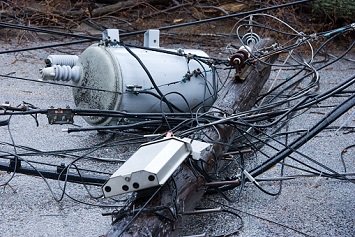In 2017, there were 10,000 deaths caused by natural disasters worldwide. And a lot of those occurred while people were on the job. In addition, research shows that the number of recorded natural disasters has increased quite a bit in the past century. So, it’s still critical, perhaps now more than ever, that we’re well-prepared for them.
Additionally, environmental emergencies and disasters are still commonplace in the workplace across industries. According to OSHA, thousands of employees die on the job each year, and workplace hazards and accidents cost American employers billions every year.=
Luckily, however, deaths and accidents caused by natural and environmental disasters and emergencies in the workplace can often be avoided with the proper preparation and training in place. Continue reading to learn more about how you can ensure your employees are prepared for emergencies and disasters.
Understand Different Types of Natural Disasters
The most common natural disasters include:
- Hurricanes
- Tornadoes
- Earthquakes
- Floods
- Wildfires
- Landslides
- Storms
- Volcanic activity
Be aware of what types of natural disasters are more likely to occur where you and your employees conduct business, and stay informed. Have the appropriate precautions in place for each location.
Understand Different Types of Environmental Emergencies
The most common environmental emergencies that can occur in the workplace include:
- Toxic gas releases
- Chemical spills
- Radiological accidents
- Explosions
- Civil disturbances
- Workplace violence resulting in bodily harm and trauma
Be aware of what types of environmental emergencies your offices, buildings, and employees are most susceptible to experiencing. And then initiate precautions for them.
Implement an Emergency Planning Team
Regardless of how small or large your organization is, you should always have a plan in place for emergencies. Make sure you have a team in place that is responsible for planning your emergency protocols, policies, and procedures. The team members should determine what should happen in the case of an emergency or disaster, where certain kits and resources will be located, how authorities will be notified, how employees will be evacuated and accounted for, etc. They should thoroughly document their plan, share it with everyone, and call in experts for consultations when necessary.
Designate Teams to Execute Your Emergency Action Plans
You should also have teams that are responsible for doing things like executing an evacuation, securing the proper supplies for when a chemical spill happens, sending out emergency notifications to employees when there’s an active shooter, etc. And you will probably have multiple teams for different types of emergency action plans. For instance, the team that handles evacuations in the case of a live shooter will be different from the team that handles an explosion in a warehouse.
Train Your Teams for Their Designated Roles and Responsibilities
Once you designate teams, make sure that they’re trained and prepared to handle their roles and responsibilities. And always call in experts for guidance with this type of training. For instance, you should call in a firefighter to help your team members with how they should properly evacuate your building in case of a fire.
Check out tomorrow’s EHS Daily Advisor for more things you can do to ensure your employees are properly prepared for emergencies and disasters.

